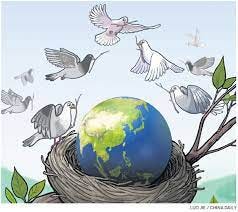During the last twenty-five years, the peoples of the global South have been constructing in practice an alternative world order. There are various signs of the phenomenon: the renewal of the Non-Aligned Movement, the emergence of BRICS and BRICS plus, the evolution of a new socialist paradigm in the countries that have been constructing socialism since the middle of the twentieth century, the declaration for socialism and the emergence of a new political reality in Latin America, the formation of regional associations that seek mutually beneficial trade, and the current reiterated call for a multipolar world.
The renewal of the Non-Aligned Movement
As I observed in my commentary of October 22, 2021, the Non-Aligned Movement grew out of the Bandung conference of 1955, and during its classic period of 1961 to 1983, it formulated the fundamental principles and concepts of a more just post-colonial international economic order. Its formulation included the demand for the aboli…


